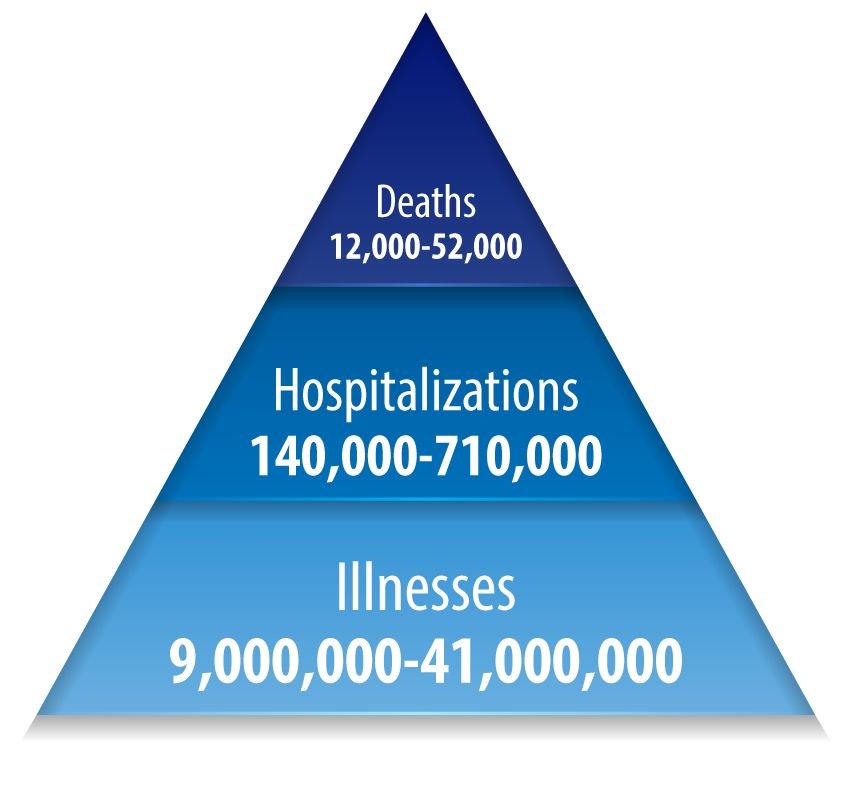CINCINNATI — While serious cases of COVID-19 are on the decline in the United States, health experts expect flu cases to rise this year because of pandemic-related health restrictions and precautions being lifted.
What You Need To Know
- Health officials are reminding greater Cincinnati residents of the importance of COVID and flu vaccines
- Viewed as a 'crystal ball' for the United States, Australia had a worse-than-usual flu season this year
- While COVID cases are down, there are still more than 112 people in local hospitals battling the disease
- Beyond staying up-to-date on vaccines, health officials stressed continuing to use pandemic-like strategies to stay safe during the holidays
For that reason, they’re also urging residents to remain updated on their vaccines to guard against not only COVID but also the flu as the United States heads into the fall and winter months.
As of Friday, there were 112 COVID patients in the hospitals across the eight counties in the Health Collaborative’s Southwest Ohio region. Of those, 17 patients are in ICU and five are on ventilators.
For perspective, at the peak in 2021 during the omicron surge last winter, there were more than 1,000 patients in the regional hospital system and 200 in the ICU.

“These are very, very different numbers right now than what we saw during that major surge,” said Tiffany Mattingly, vice president of clinical strategies for the Health Collaborative.
“We’ve seen a fairly precipitous decrease in hospitalizations over the past week or so, which is a really good sign after plateauing in the upper 100s hundreds to low 200s for a few weeks,” she said. “Although our ICU cases are still holding steady.”
Dr. Carl J. Fichtenbaum, MD — a professor of infectious diseases at the University of Cincinnati and UC Health — believes we’re entering a new phase of the pandemic.
For the first time, he noted, there are vaccines being changed to react to specific strains of the virus. That’s “very important,” Fichtenbaum said, because it means the vaccines should provide better protection.
Currently, about 95% of the variants circulating are the Omicron BA.5 variant, according to Fichtenbaum. There’s also a BA.6 variant that has circulated, he noted, but there’ve only been a “very small number” of those cases detected in the U.S.
Fichtenbaum described this as a “stable phase” of the COVID-19 situation, but despite infections still happening, many people are “tuning out.”
“I think everybody’s kind of over it,” he said.
“The news is generally good that we are able to control (COVID) pretty well, but there are still plenty of people who are transmitting it to one another,” Fichtenbaum added. “We are still having people develop symptoms and come to the hospital to get tested.”
As the U.S. continues to combat the spread of COVID, the country is preparing to enter its influenza, or flu, season.
Fichtenbaum expects a “fairly significant” number of flu cases this season compared to the past couple years. That’s due in part to the fact people were staying separated and still wearing masks.
“Our immunity levels have probably dropped some for the influenza virus because we were taking those precautions,” he said.
Australia, which is just ending its winter season, was hit with its highest number of flu cases in years, according to The Atlantic. And many of those cases are “a little more serious,” Fichtenbaum said.
Mattingly described Australia as a “crystal ball” into what to expect to see in the U.S. during the northern hemisphere’s fall and winter months.
From 2010 to 2020, the flu has resulted in 9 million to 41 million illnesses, 140,000 to 710,000 hospitalizations and 12,000 to 52,000 deaths every year, according to estimates from the Centers for Disease Control and Prevention (CDC).

So far, there’ve only been a handful of reported cases, but Fichtenbaum predicts those numbers will go up in late October and early November — right around the time people spend more time indoors and gathering in large groups for the holidays.
“I expect our flu season to be fairly significant,” he said. “You can’t tell whether you have the flu or you have COVID. They’re treated differently, and people have different risks of developing more serious complications from influenza or COVID.”
To help counteract those trends, both Mattingly and Fichtenbaum stressed the importance of being up-to-date on COVID vaccinations, including the bivalent vaccine booster, and getting the influenza vaccine.
The CDC recommends updating COVID-19 vaccine as soon as you can, and ideally receiving the flu vaccine by the end of October.
Initially, the health agency recommended a two-week gap after receiving a COVID-19 vaccination. But now the organization states a person can get a COVID-19 shot or booster and flu shot at the same time.
“Either way is acceptable, and we’re not expecting to see any additional side effects from either vaccine,” Fichtenbaum said.
While COVID may not be as fatal today as it was early in the pandemic, it remains a concern for vulnerable populations — people with autoimmune issues, those who have heart disease or lung disease, and people over the age of 65 and those who are very young.
“I think the question of why people should get vaccinated first is number one to protect themselves and the ones that they love,” Fichtenbaum said. “The second reason is, infectious diseases are communicated between people, and therefore each of us has a responsibility to do our part to make sure we’re not the one who is transmitting these infections accidentally, and also that we will not be vulnerable to these infections.”
Mattingly also stressed the importance of maintaining other pandemic-style defensive strategies in place, whether it’s preventing the spread of COVID-19 or the flu. That means washing your hands, vaccinating, wearing a mask — the things many have been doing since the start of the pandemic in March 2020.
The Ohio Department of Health put together an updated chart outlining what a person can do if they have or have been exposed to COVID.
“While the pandemic is not officially over yet, we are hopefully transitioning into an endemic stage, which means we need to learn how to live with it,” she said. “This is just a part of what we do now to take care of ourselves and others.”
For now though, continue to get your COVID vaccine, Fichtenbaum said.
“If we find COVID is no more dangerous than just a regular old cold and no one ever gets very sick from it, then we can always reconsider our vaccination policies,” he said. “But right now, we still think COVID packs a pretty good punch.”
For information about local testing and vaccination options, visit the Health Collaborative's Test and Protect website.






